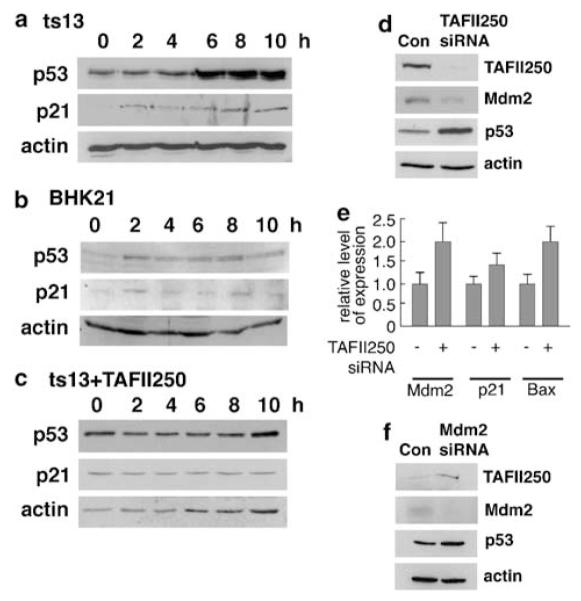Figure 2.

Mdm2 and TAFII250 are reciprocally regulated. ts13 cells (a) or the parental line BHK21 (b) were maintained at 33°C then shifted to 39°C and subsequently harvested and lysed in 2 × SDS loading buffer at different time intervals post-shift (0, 2, 4, 6, 8, 10 h). The cell extracts were analysed by Western blotting using DO-1 antibody for p53, the C-19-G antibody (Santa Cruz) for p21 and 20–33 antibody (Sigma-Aldrich Company Ltd., Dorset, UK) for actin.(c) ts13 cells were transfected with 10 μg of TAFII250 expression vector per 10 cm plate. The next day, cells were shifted to 39°C, harvested at different time points and analysed by western blotting for p53 and actin protein levels. Transfection efficiencies were generally in the range of 50–70% in this experiment. (d–f) U2OS cells were transfected with siRNA duplex for TAFII250 (d and e) or Mdm2 (f). As controls, the cells were transfected with siRNA duplexes of random sequence (d–f). Cells transfected with siRNA were harvested after 24 h (e and f) or 48 h (d). Levels of TAFII250, Mdm2 (monoclonal antibody 4B2), p53 and actin proteins were analysed by Western blotting (d and f) as above. (e) The relative levels Mdm2, p21 and Bax mRNAs in the TAFII250 siRNA-treated as compared with the scrambled siRNA-treated cells were measured by Taqman.
